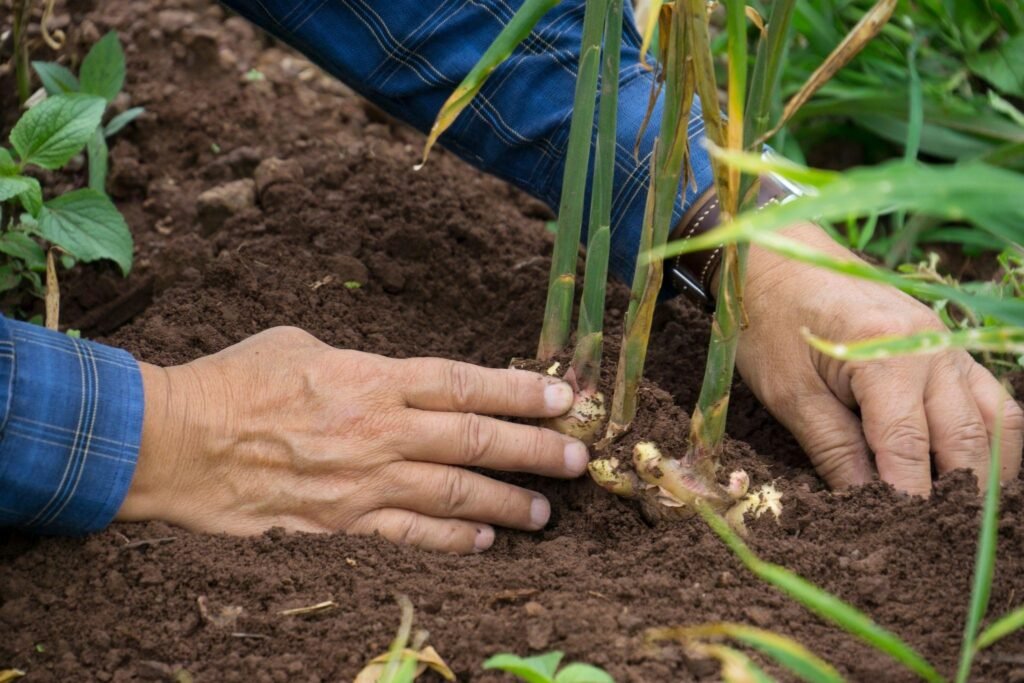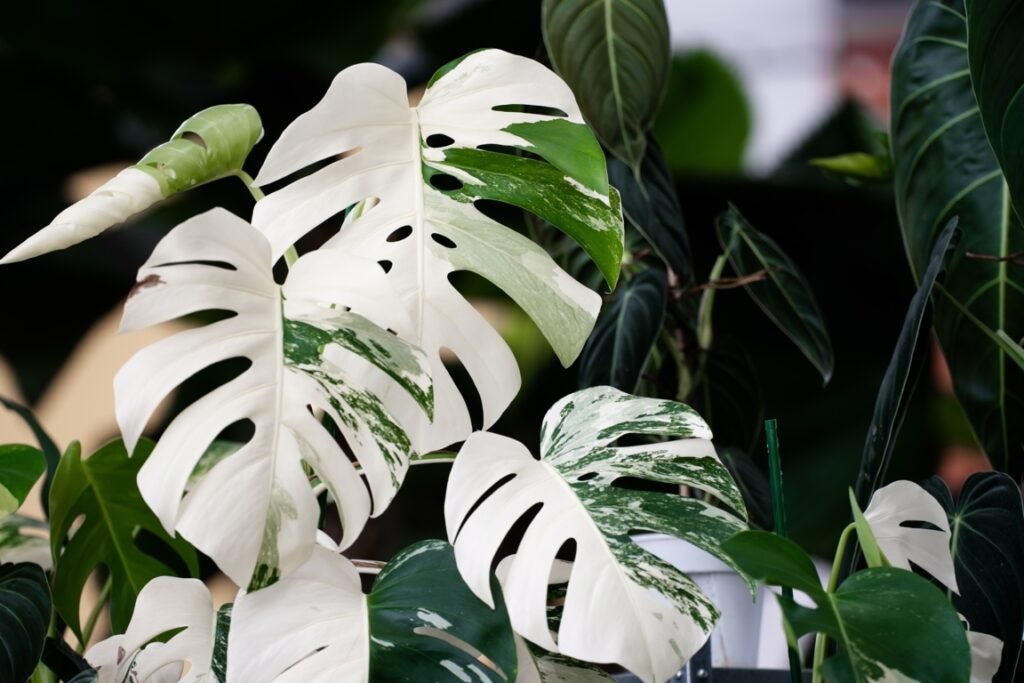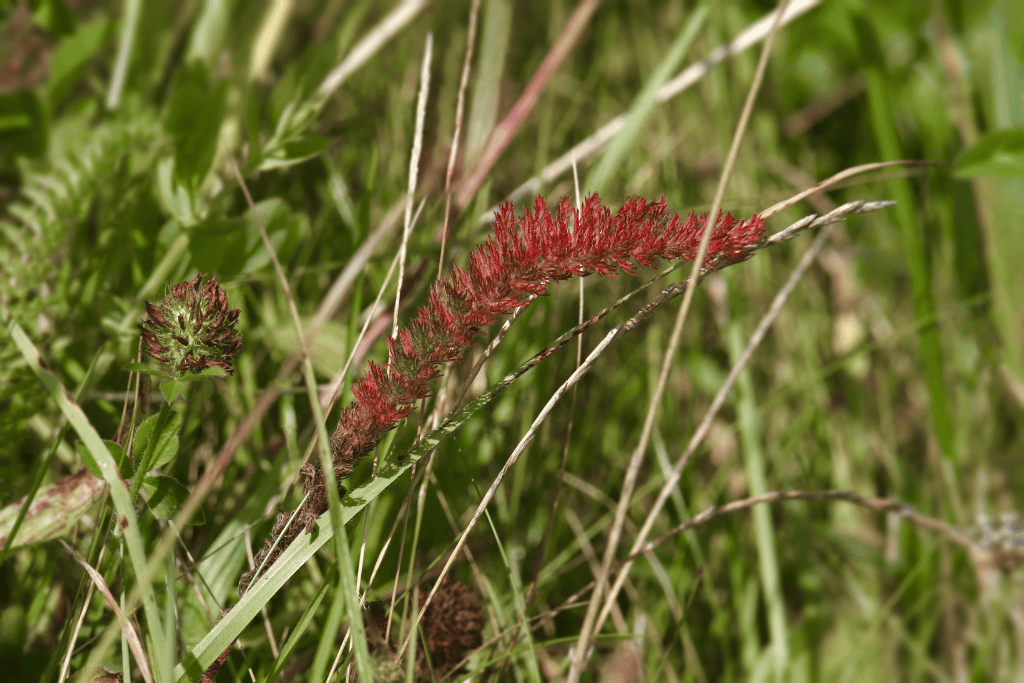It’s a fine morning, and you’re standing in your garden, admiring the beautiful rows of vegetables and herbs. You suddenly feel inspired to take it up a notch. Why not add some spice to your life by planting ginger in your garden? The mere thought of it brings a wide smile to your face. But, something holds you back – The fact that you don’t know how to plant ginger in the garden.
No worries. We’ve got you covered with this step-by-step guide on planting ginger in the garden. Once you’re done reading this guide, you’ll know how to garden ginger efficiently.
First, let’s find out why you need ginger in your garth.
A Step-By-Step Guide on How to Plant Ginger in the Garden

Here are 15 steps on how to plant ginger in the garden:
1. Choose a suitable location
The location you choose should get plenty of sunshine, as ginger likes warm and humid conditions. Make sure the soil is well-draining and has enough organic matter to keep it moist but not overly wet.
2. Test the soil pH
Ginger prefers slightly acidic soil – around 6.5 when tested with a soil pH test kit. If the pH is higher, you can lower it by adding sulphur or peat moss to the soil.
3. Prepare the planting site
Dig at least six inches deep. Add compost to improve drainage and nutrient content if your soil is too sandy or clay-based.
4. Plant the rhizomes (ginger roots)
Ginger rhizomes should be planted at least 2-4 inches deep in the soil and a few inches apart from one another. You can use a piece of ginger root purchased from the grocery store.
5. Cover the rhizomes
Once planted, cover the rhizomes with 1-2 inches of soil and water to settle them down around the roots.
6. Keep the soil moist
Ginger plants require regular watering and need at least 50% relative humidity to thrive. Water the soil frequently, making sure it does not become soggy.
7. Mulch around the plant
Adding mulch around the ginger plant will help keep moisture and provide insulation for the roots.
8. Fertilise
Ginger plants should be fertilized regularly with a balanced fertilizer to ensure healthy growth and development. You can use a water-soluble fertilizer high in nitrogen or a slow-release fertilizer.
9. Monitor pests
Periodically check for any signs of insect damage or fungal diseases on the leaves, stems, and rhizomes. Treat early if needed to prevent further damage.
10. Harvest in spring
If planted in the fall, you can expect to harvest your ginger rhizomes after 8-10 months of growth. Harvest when the leaves begin to turn yellow and die back.
11. Digging up the rhizomes
Carefully dig up the entire root ball, being careful not to damage the rhizomes.
12. Cleaning the rhizomes
Separate the large rhizomes from any small ones, rinse them off and pat dry with a paper towel.
13. Cut into pieces
Slice or chop the ginger into 1-2 inch pieces, making sure to remove any damaged or discolored parts.
14. Drying the pieces
Place the pieces in a single layer on a sheet pan and place them in a warm, dry area to cure for 1-2 weeks.
15. Storing the rhizomes
After drying, you can store the ginger rhizomes in a cool, dark place for up to six months.
16. Freeze for longer storage
To store ginger for longer than 6 months, you can freeze it in an airtight container or bag.
How to Grow Wild Ginger in your Garden?
Wild ginger, also known as Asarum canadense, is a herbaceous perennial plant native to North America. It is a member of the ginger family and has large, heart-shaped leaves that are dark green in colour. Wild ginger is particularly well-suited for shady gardens and damp woodlands. Growing wild ginger in your garden will provide beautiful foliage as well as a spicy scent when its leaves are crushed.
Now, let’s learn how to grow wild ginger in your garden. You will need to identify the right location and soil type for wild ginger to thrive. Wild ginger prefers partial shade and moist, well-drained soil that is slightly acidic with a pH of around 6.0-6.5.
Once you have identified the ideal spot in your garden, you will need to purchase some wild ginger rhizomes from your local nursery. Plant the rhizomes just below the surface of the soil and water well. Wild ginger usually takes around two weeks to sprout, so you must be patient while it establishes itself in your garden.
Once growing, wild ginger requires very little maintenance apart from occasional watering during periods of drought. It will spread slowly by its rhizomes, but it is not invasive and will not take over your garden.
What Garden Zone Can You Grow Ginger Root?
Ginger root is a tropical plant and will only grow in the warmest garden zones. It requires temperatures of at least 68 degrees Fahrenheit for it to germinate, so if you live in cooler climates, ginger should be grown as an annual or kept indoors. Ginger can be grown outdoors in USDA hardiness zones 8 through 11.
In cooler climates, rhizomes can be planted directly in the ground in late spring when temperatures have warmed up and harvested before cold weather sets in. In warmer regions, ginger plants can be left in the ground year-round and will produce multiple crops throughout the season.
When growing ginger root outdoors, make sure to keep it well irrigated but not waterlogged, as this can lead to root rot. Mulching around the ginger plants will help keep their roots cool and moist during summer. Ginger should be harvested when it reaches its full height and before the leaves start to yellow and die back.
Care and Maintenance After You’ve Planted Ginger in Your Garden

Watering
Once the ginger has been planted in your garden, it’s essential to make sure that you keep the soil moist. This can be done by watering regularly and avoiding excessive overwatering, which can cause root rot or other fungal diseases. Additionally, adding a layer of mulch around the ginger plant will help to keep the soil moist and reduce weeds.
Fertilising
Ginger will require regular fertilising to ensure optimal growth and health of the plant. A balanced fertiliser should be applied every 6-8 weeks during the growing season, and a higher nitrogen content fertiliser can be used in early spring when new foliage starts to emerge.
Weed Control
Weeds can be a problem in gardens, and keeping them out of your ginger patch is essential. Manual weeding is the best way to ensure that weeds don’t take over your garden. Additionally, adding a layer of mulch around the ginger plants will help reduce weed growth by blocking sunlight from reaching the soil.
Pest control
Ginger can be susceptible to insect pests, so monitoring your garden for signs of an infestation is essential. If you notice any insects on the ginger plants, treat them with an appropriate pesticide according to the product label instructions. Additionally, beneficial insects such as ladybugs and lacewings can help control your garden’s pests.
Harvesting
Once the ginger plant has been established, it should be harvested when the rhizomes are mature (usually after 8-10 months). Carefully dig up the rhizomes and remove any soil before storing them in a cool, dry place. The ginger can then be used for cooking or medicinal purposes.
Following these simple steps, you can easily learn how to plant ginger in your garden. With regular watering and fertilising, along with weed and pest control measures, you can ensure that your ginger plants thrive in the garden!



